I need to make some 5.75 inch connectors for our battery assembly process. It's not something you see everyday, so...
Well, here is our lead melting station with it's main tools and moulds. There is a propane tank under the "table" and burner / pot.
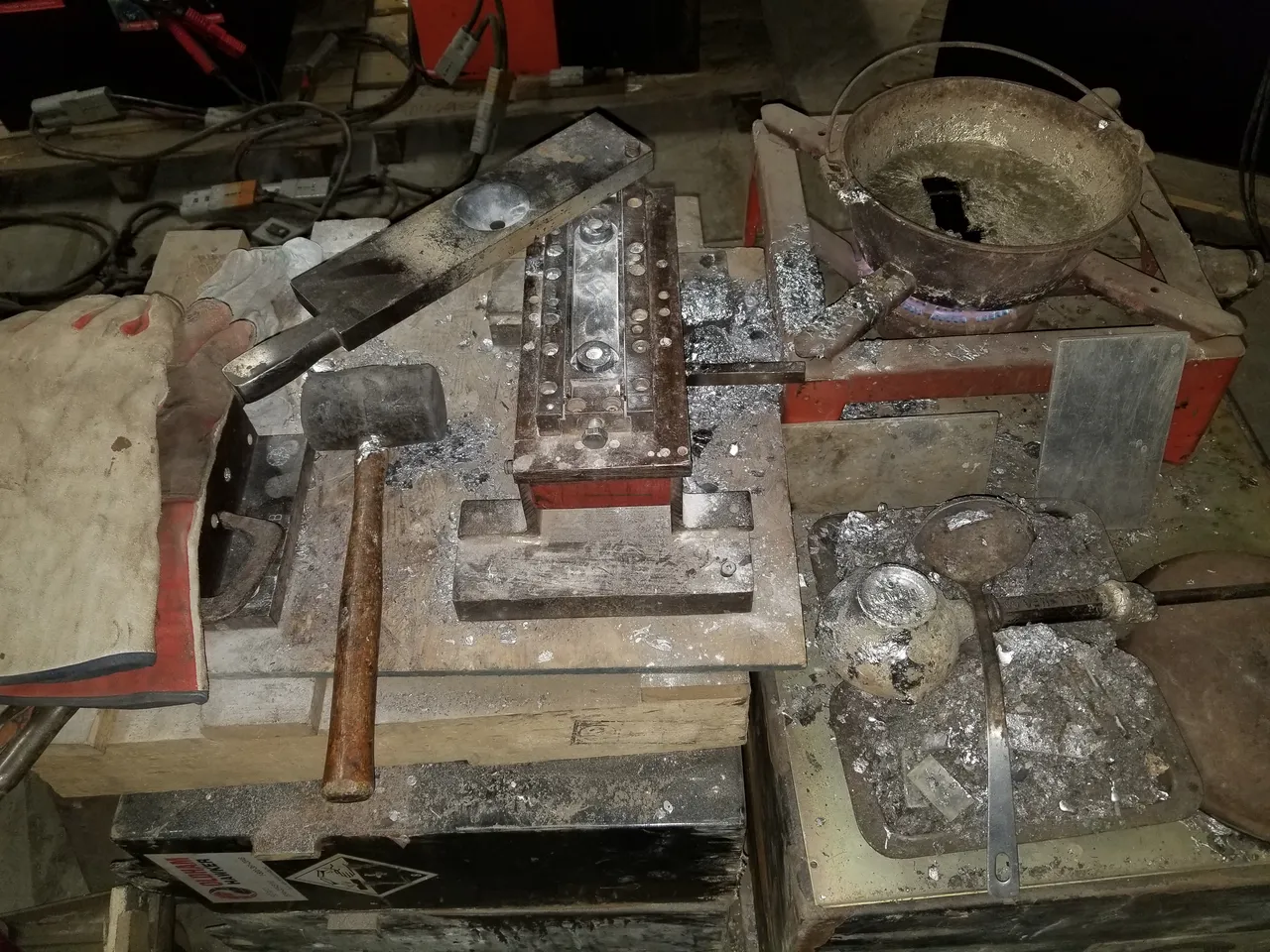
Here is some molten lead.

But before using it, it has to be cleaned of the "slag." This material is not useable by us because it contains other metals, debris, and lots of carbon. Good thing it floats!
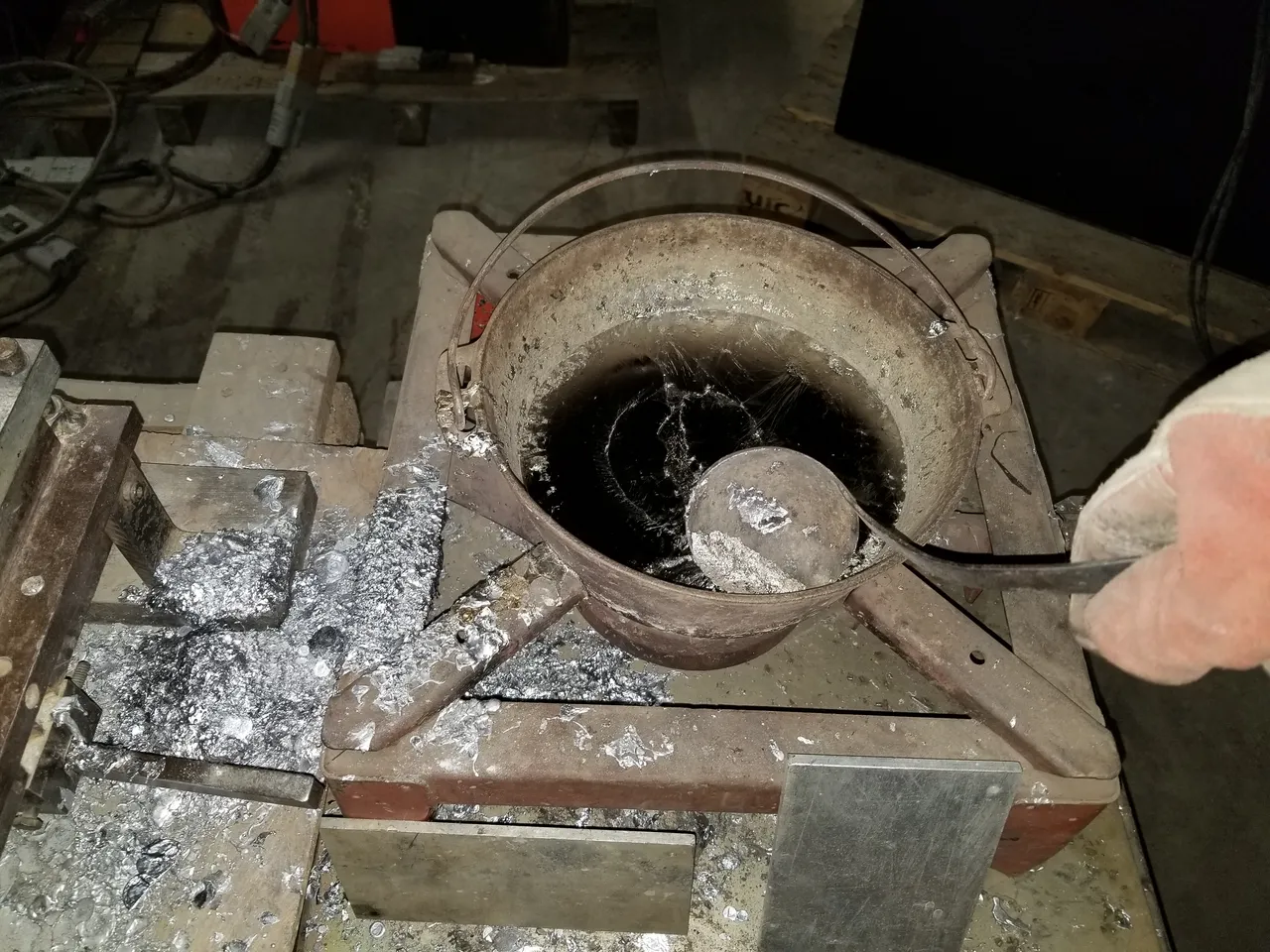
It goes here for now.

This is the mould I'll be using. You can add or remove the sections in the middle to make connectors of varying lengths.


We use a special ladle that rather than pouring over it's edge, has a tube that allows the lead to flow from the bottom of the cup.
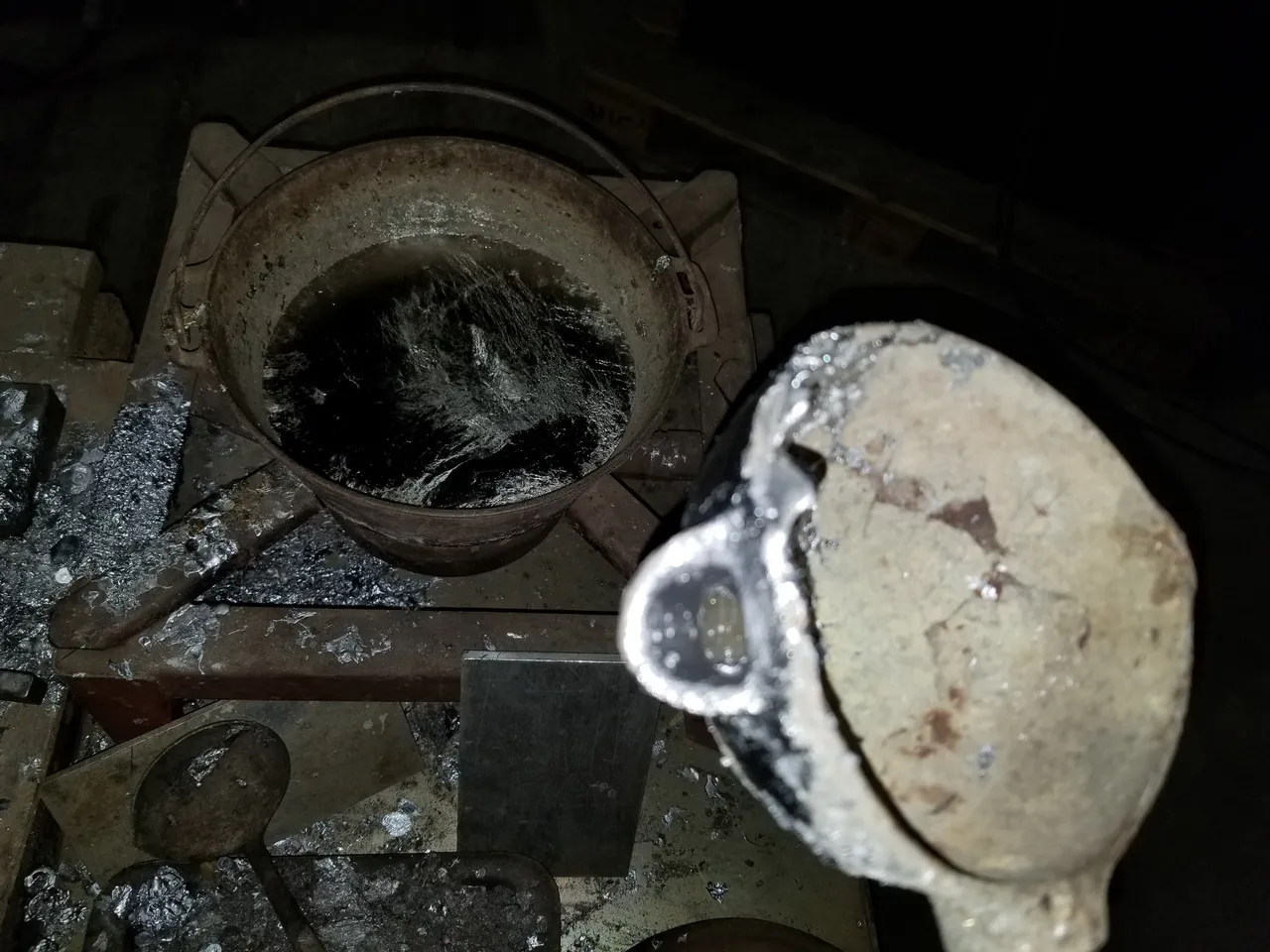
This means you get clean lead with no slag, and it stays hot. (Lead cools and solidifies in seconds.)
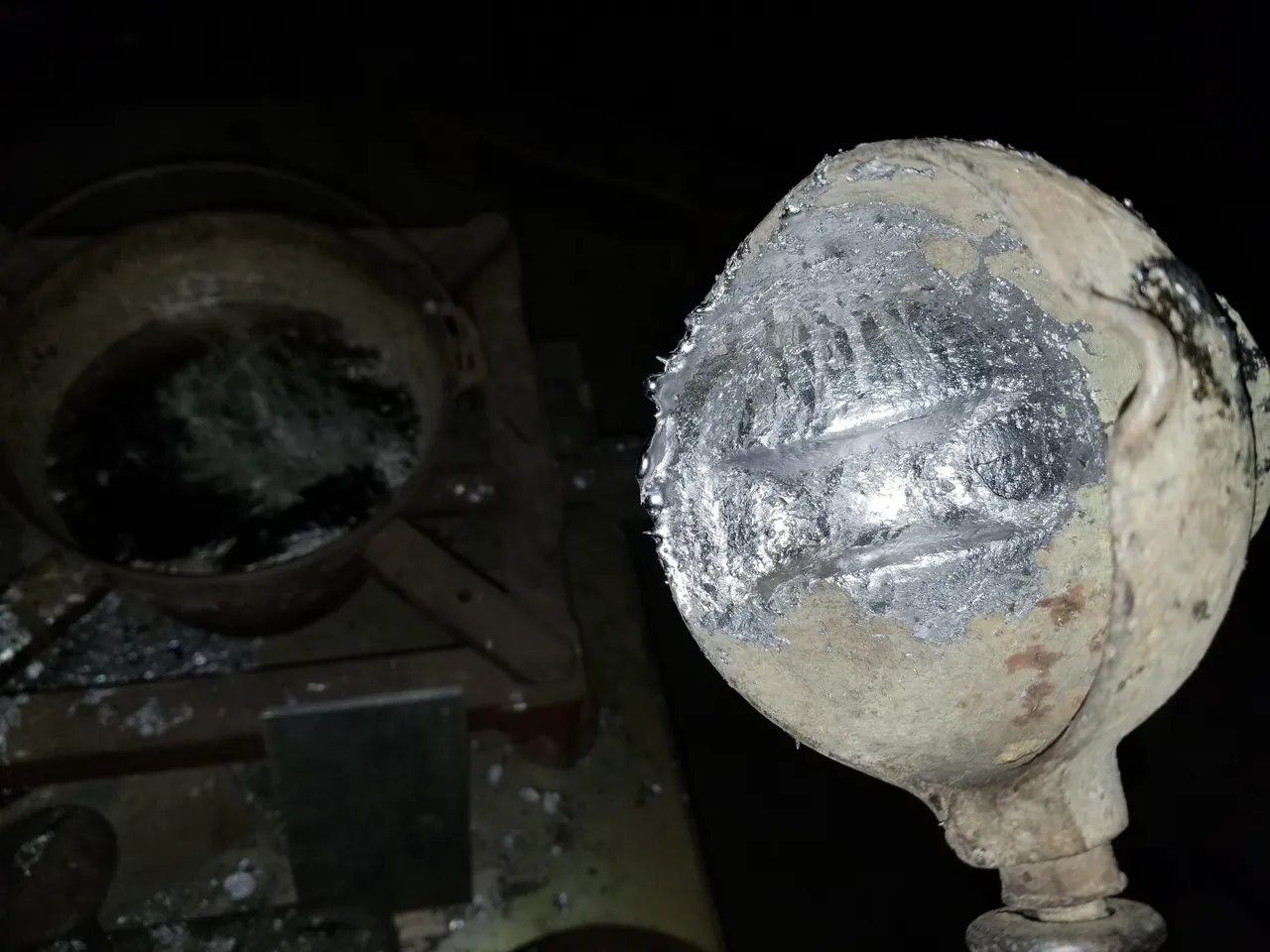
Everything's good to go, so let's do the first pour.
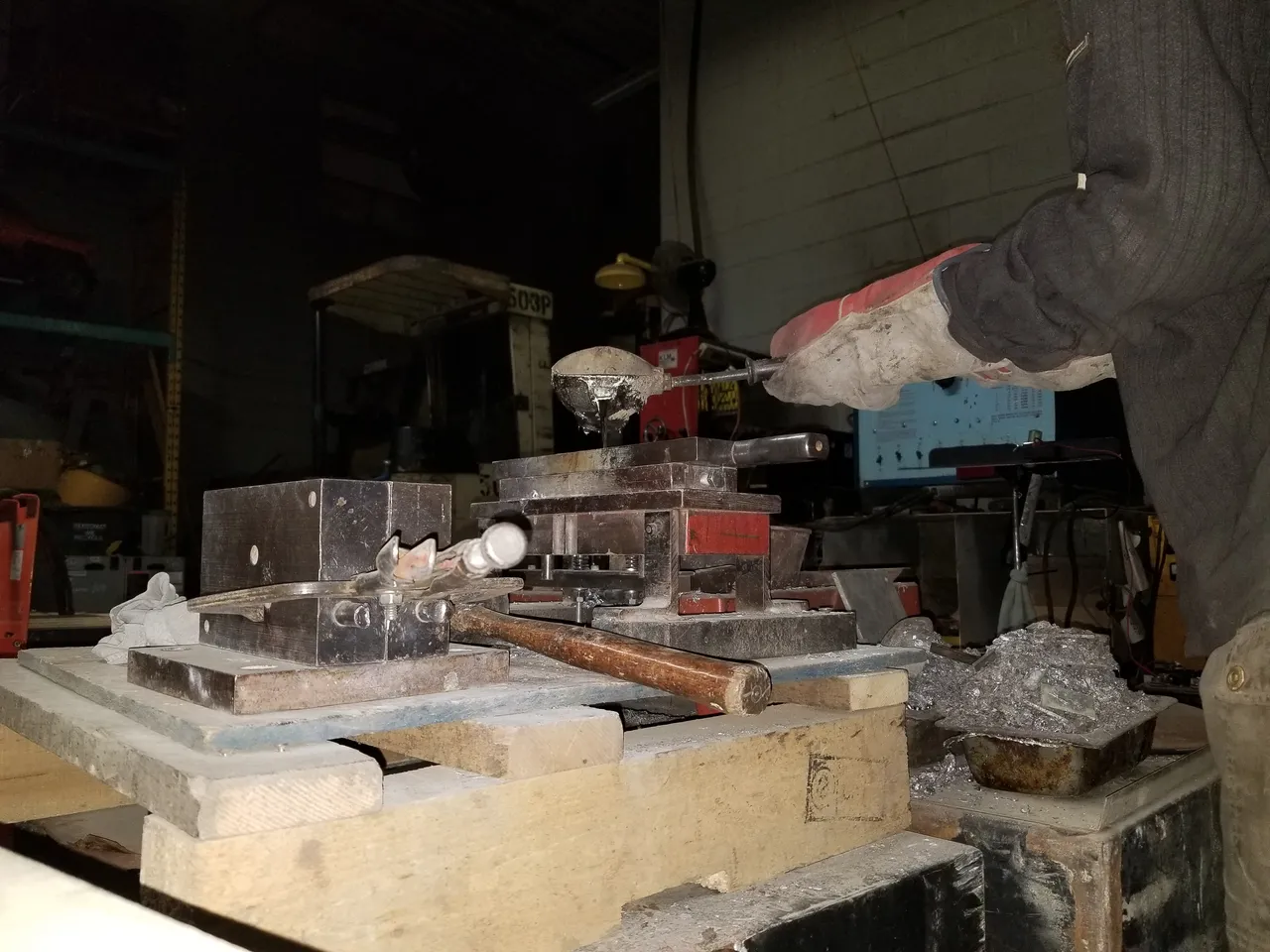
Wait 30 seconds, then open the mould by striking the handle a couple of times with a mallet.
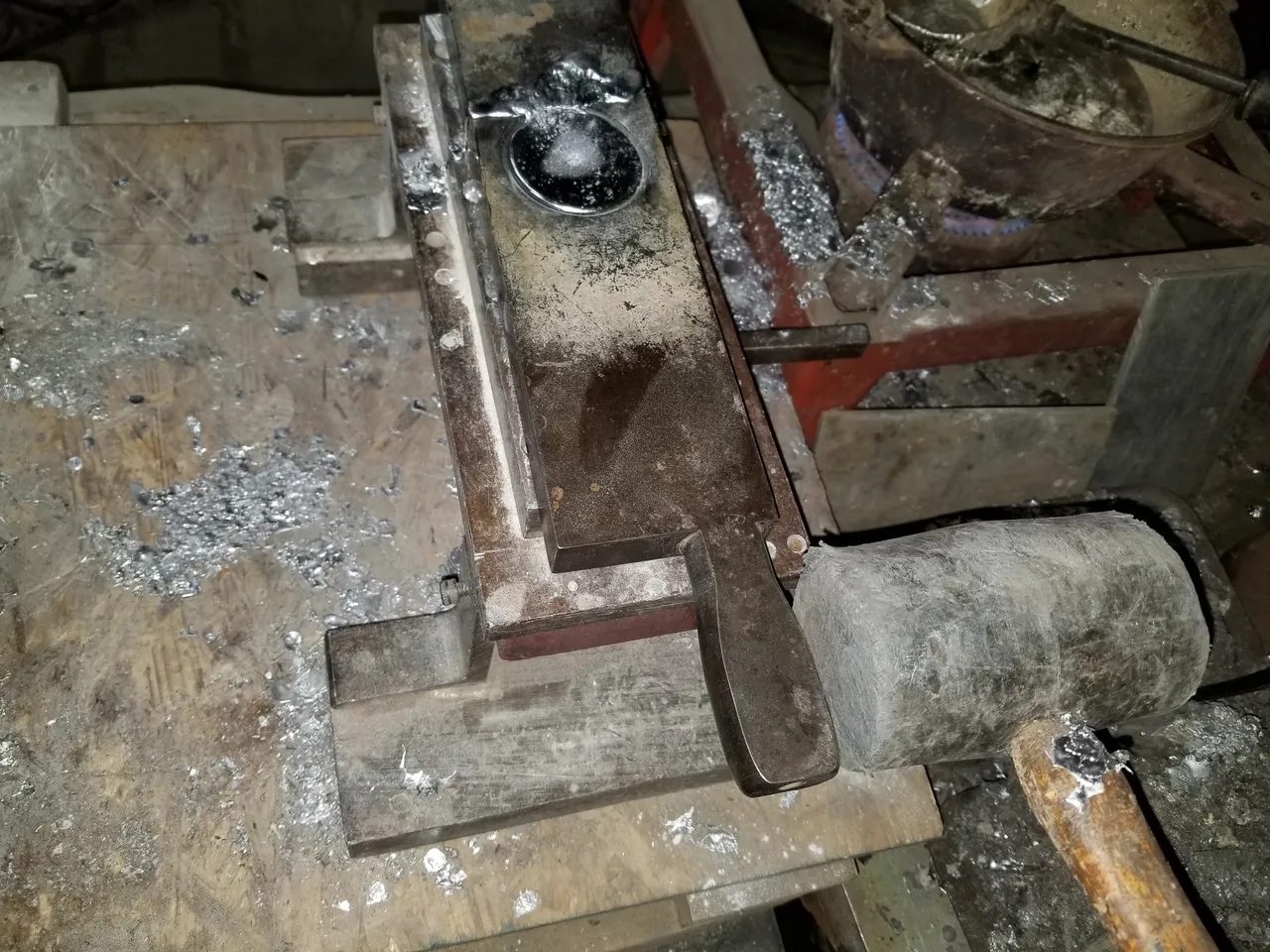
If you look closely under the mould in the photo where I'm pouring lead, you can see the mechanism that I will operate here by striking this lever. There are pins in the mould that will pop the connector out as I strike.

Now freed, I can do a quick inspection of the connector. This one is no good because of this dimple. So it goes back into the pot, and we try again!
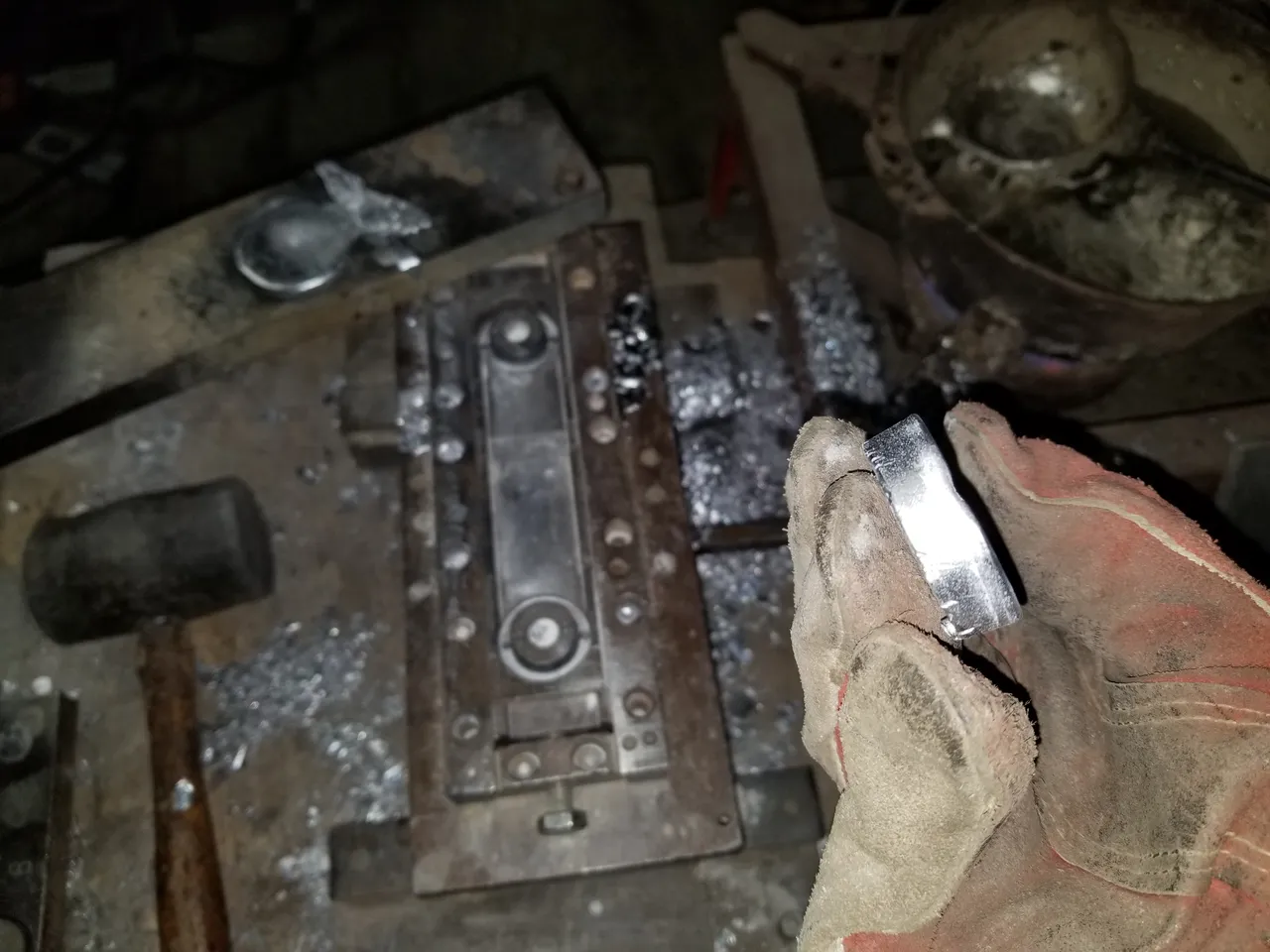
Retouching the mould with baby powder to help prevent the connector from sticking.

This next one is good. All sharp around the edges so it will lie flat and have no openings.
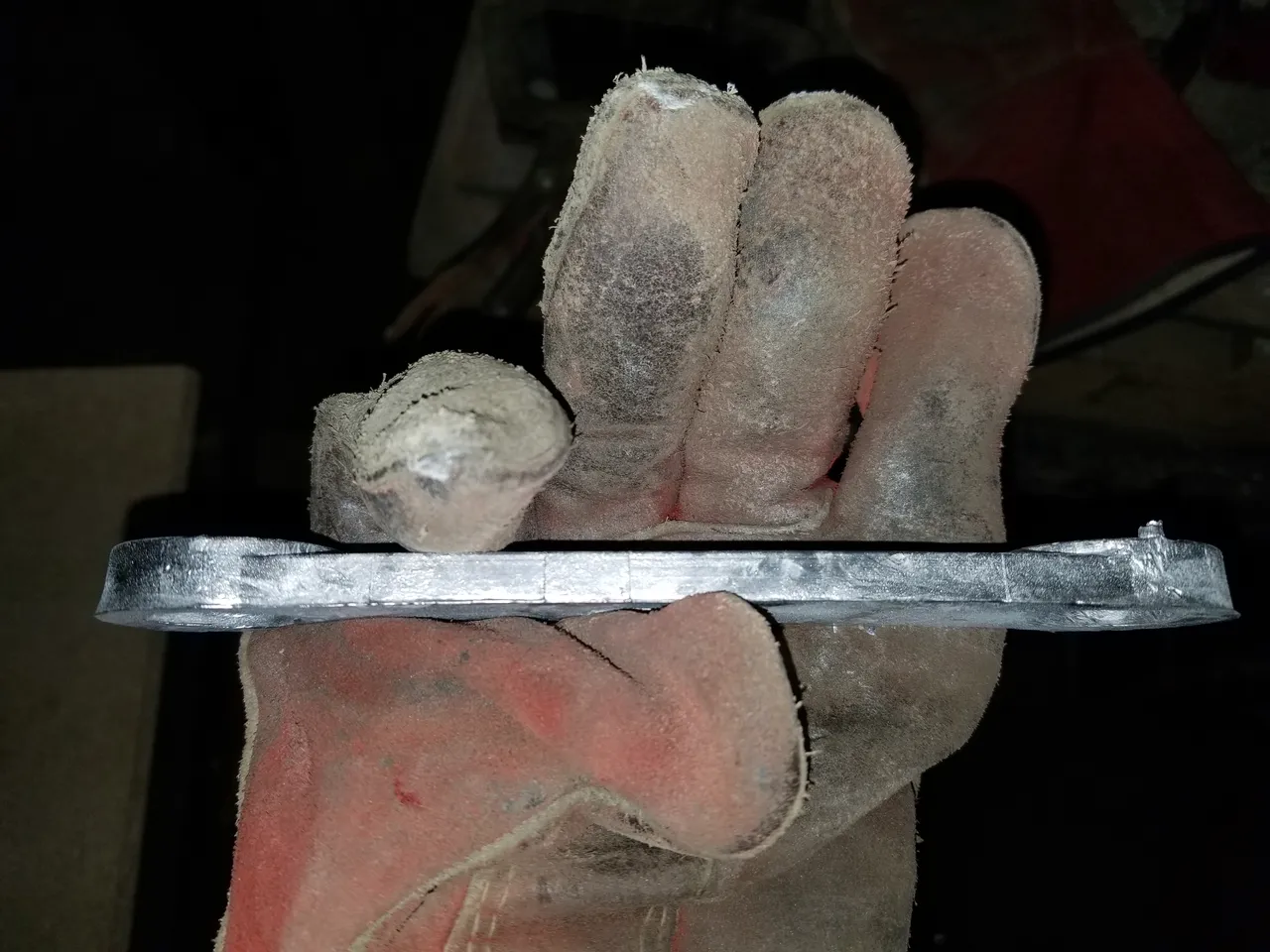
Here is the underside of the connector. But when making it, it faces this way up in the mould. That little circle near the middle is where the lead was poured into the mould. The excess lead on the arm of the mould that moves, was sheared off this point when I opened it.
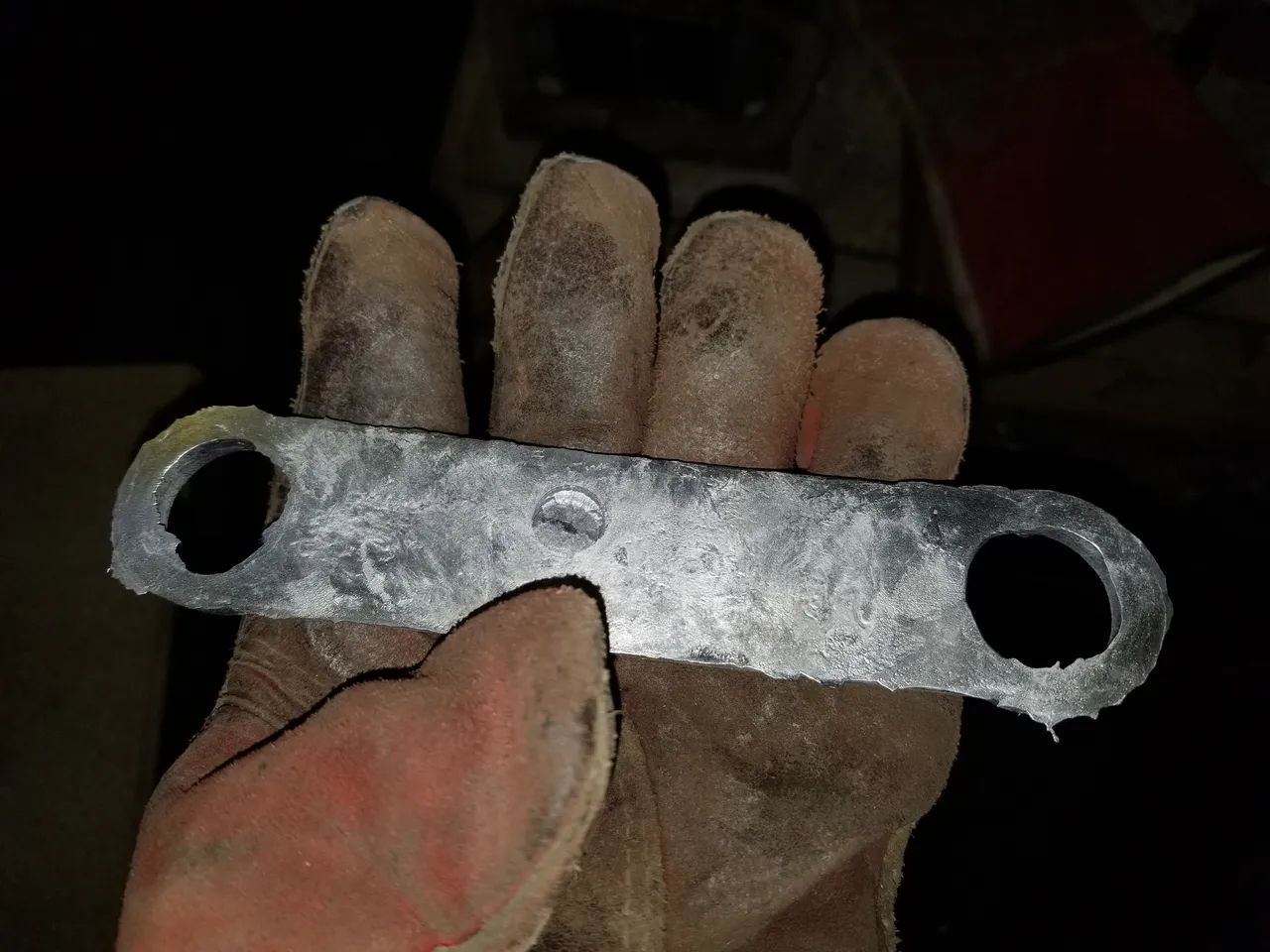
Here is the top of the connector. You can see 3 of the 4 marks from the pins that pop the connector. My thumb is covering the 4th.
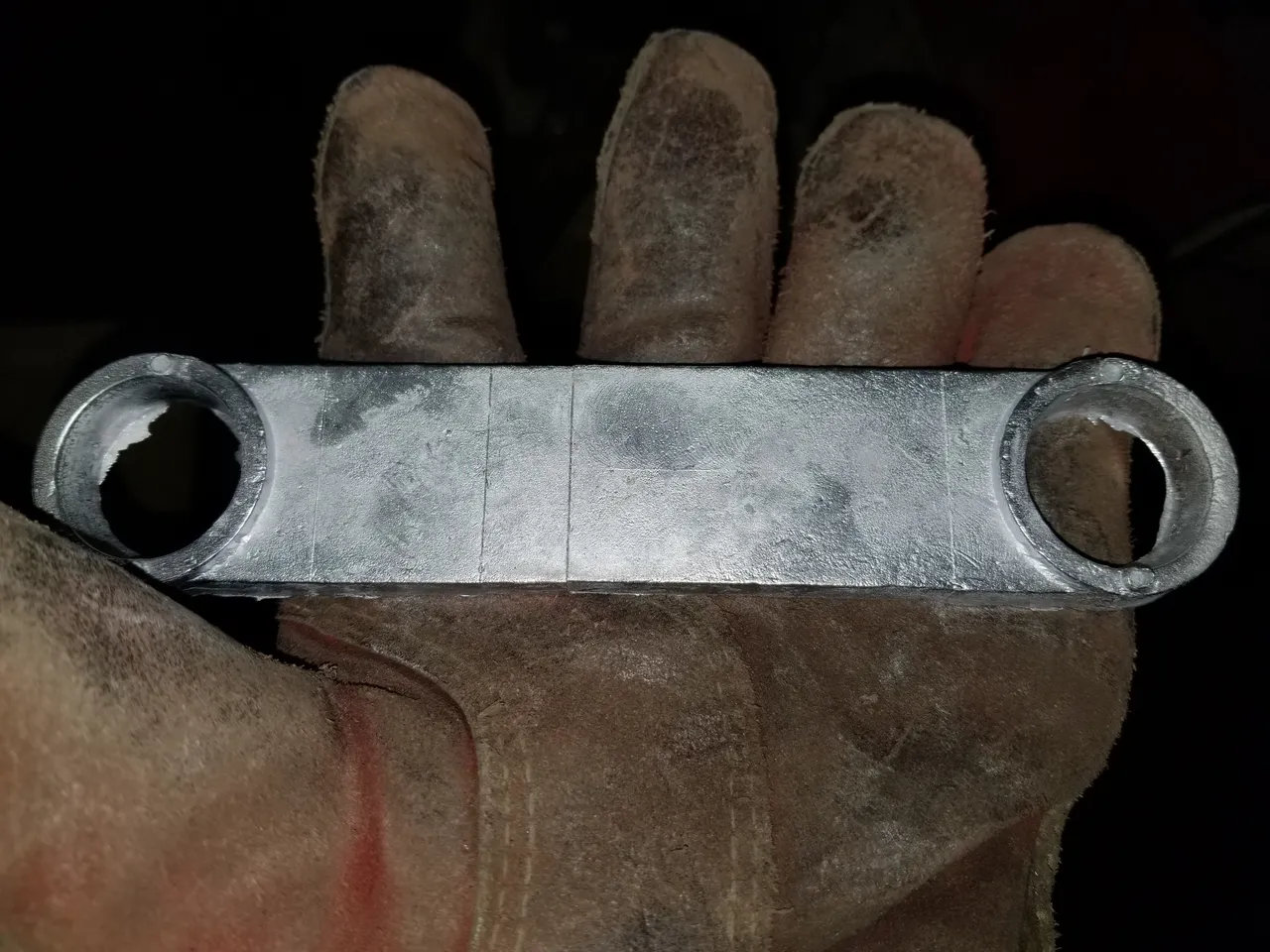
And here is what they are used on, cells of a battery. Industrial batteries require anywhere from 6 to 72, or even more of these in specific cases. Although any conductor could be used to connect them, there are many reasons to use lead for some operations.

The cells are put in a case, welded together with our connectors, then shrouded in plastic like this. (This is a battery in for service, not how one looks when it's nice and ready to go out...)

Hope that's interesting to some of you. Because I make a whole bunch in one go, it's not something I do everyday, so I grabbed the pics...
(Photos are my own.)
Thanks For Your Attention and Support!
Melech ben Chaya מלך בן חיה, @inphiknit
